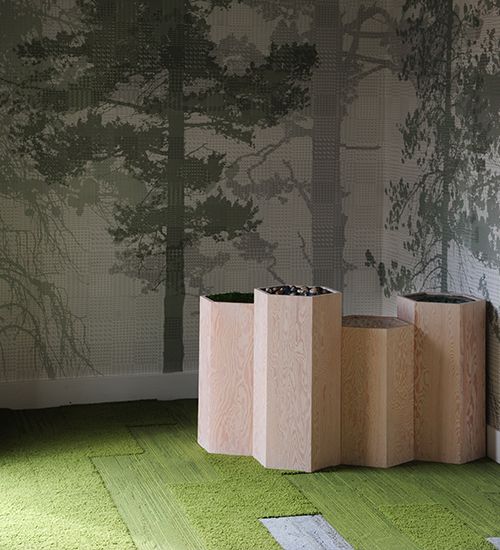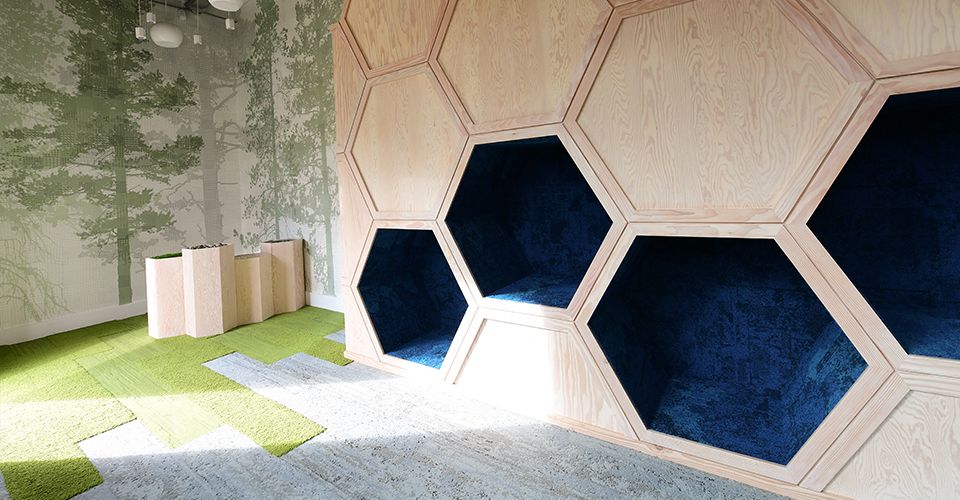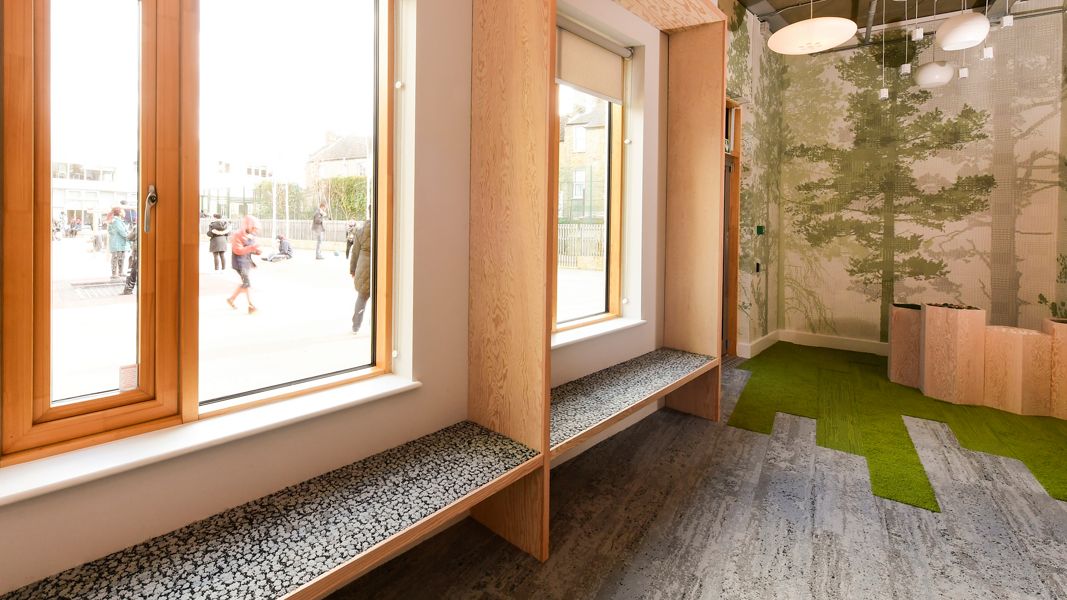There is a wealth of evidence that harnessing a child’s innate attraction to the natural world through biophilic design can improve their physiological and psychological health.
But despite this evidence, biophilic design principles have not been widely adopted in education spaces. There are all sorts of ways that biophilic design can be introduced into education spaces. It doesn’t have to mean spending lots of money. It’s simply about understanding and recognising the opportunity we have as designers to improve that connection to nature.
It can be through a direct connection to nature, such as introducing plants into a classroom or flooding a space with natural light with using the positioning of windows. It can also be as simple as introducing references to nature through the use of nature inspired textures, patterns and colours.
I recently worked on a project with the Garden School in Hackney London, which offers education for 2-16 year olds, with highly specialised provisions for learners with autism. The school strives to nurture communication, learning and independence and it needs a building which is designed to help deliver this.
I worked with flooring manufacturer Interface to transform an unused room in the school into a safe and recuperative space for pupils with autism, well away from the usual noise and bustle of the playground.
As direct forms of nature, such as plants (a common feature in biophilic design), may not withstand the day-to-day physical interaction with the children, I opted to instead mimic natural elements through the textures, patterns and colours used with the design, as well as through the images of nature used on the wall coverings. Research has demonstrated that using nature inspired design in this way can positively impact perceptual and physiological stress responses1.
References
1 Salingaros, 2012; Joye, 2007; Taylor, 2006; Kaplan, S., 1988




